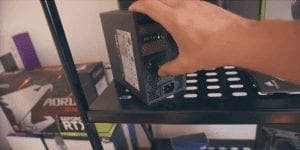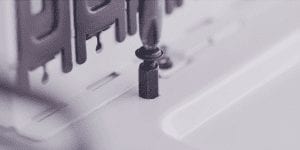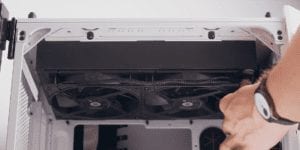DON’T Do This When Building a PC! Our Common Mistakes

Share:
I built a lot of computers over the years, and you know sometimes things get out of hand and silly mistakes can happen when you build a PC. By the way, if you have not yet ventured into building your own computer, we highly recommended it! It can super fun and rewarding. So today I’m going to share a slightly embarrassing list of mistakes that 100% did not happen to me… *cough* …so we can all appreciate the art of the assembly process.
All right let’s begin with the basics. Simply opening the case box, which you’ve probably been doing wrong for this entire time. Likely you’ve been opening the box at the top and the flipping it over to give birth to the case, and the rotating the case until it’s facing up, but that’s way too much work. Instead you should cut at the bottom of the box, lift, and then the case is ready.
One of my most common mistakes, believe it or not, is actually forgetting to turn on the power supply. You get that brief moment of panic when you’ve tried to press the button on the case and nothing is booting up. This is especially annoying and frustrating if the power supply is somehow hidden inside the frame and is not easily accessible. Thankfully this is a rare issue, but most of the time just make sure that the switch is turned on.
I hate how the threading on motherboard standoffs is not standardized across cases, so either you have the fine-threaded screw which can be used for like SSD mounting and such or the slightly wider threaded screws which are often used for radiator installation. Of course, if you use the included screws with the case you will not have an issue, but I have collected so many toolboxes and screws over the years that I just take one from there and don’t use the screws provided by the case. I should use them but that is my mistake, and half the time my screws don’t fit when trying to secure the motherboard to motherboards standoffs.
I think we’ve all been there… not reading the instructions manual. Even though you may think you know how to open the side panel, mount the simple PSU bracket, or construct the entire case if it comes disassembled, but it’s always a good idea to refer to the manual to avoid frustration and actually discover new things. You know you’ll feel wiser when you find out that you’re able to rotate the motherboard’s orientation or that you can install a second power supply (like on the Lian Li PC-O11 Dynamic) or even just like how to access and remove the dust filter. We’re all friends here, and the manual is your best friend when it comes to avoiding any frustration and the clarifying things. A good manual should even have clarification about the screws too, which is nice. Once again, the screw thing can be a really major point of frustration if you have different screws for the motherboard standoffs, for the SSD, and for whatever brackets there might be, especially if they’re not properly labeled inside the instructions manual.
Sometimes when I’m in a rush I’ve installed a fan facing the wrong direction. This is actually a true story, when Eber was building his first system he mounted the fans in push and pull configuration but facing each other, so both blowing directly into the heatsink. Sometimes when I’m not paying attention to the radiator placement, I can have the fan cables facing the wrong side, which is to say that when the radiator is in position the cables are facing you and not towards the back.fo the case. Speaking of cables, and that’s a whole other category, often after installing the GPU and routing all the cables I realize that I forgot to plug in the SSD and the SATA port is right underneath the GPU and now I have to pull everything out to route a single drive. Sigh…
Now what about routing everything in the system only to realize that the case lighting or some other fan controller requires molex power and you’re using a modular power supply and didn’t expect anything in the case to need a Molex power connector and you don’t have the required cable plugged into your power supply. You have just take everything out and that’s super frustrating, so always double check what needs to be plugged in either additional SATA cables or Molex, which get me every time. For cable management, the way I used to do it is plug everything in and only then try to route and clean things up, which is a rookie mistake. One by one is how you get the cleaning and touring done. As much as I love my SATA cables, I used to use one that does not actually lock into the drive, which kind of sucked because post-assembly it might had shifted and therefore when I tried to boot it would not be recognized in the BIOS and things got really frustrating. The same can be said for the 8-pin and 24-pin connectors because they’re quite bulky, they’re usually in like two housings and they’re quite difficult to put in. When I built my dual system in the Phanteks Evolv X case, I did not fully plug in the 8-pin connector on the mini-ITX motherboard, and since it was hidden behind everything else I wasted an hour of my time trying to figure out why the system wouldn’t boot. I thought it was my GPU, but nope the simple 8-pin power connector on the motherboard was just not fully plugged in all the way.
Now for as long as I can remember a magnetic screwdriver would always be part of my hardware assembly adventures be quite – BeQuiet! actually has the best one that comes with some of their coolers – but it wasn’t a long ago that I got myself a magnetic screw tray. It’s for when you remove the side panel and you put your thumbscrews on the table and they just roll away and disappear, well that doesn’t happen anymore.
Finally with any new machine, please do a clean install. Don’t be an idiot like me. I’ve gone from an Intel machine to an AMD Ryzen machine and used the same drive, but instead of doing a clean reinstallation and wiping everything, I just did the Windows refresh thing and that caused a bunch of driver issues and instability. Don’t be like me, do a fresh wipe! All right guys, so those are all my mistakes and I’m hoping you can sort of relate to them and hopefully this prevent you from making the same ones.

























